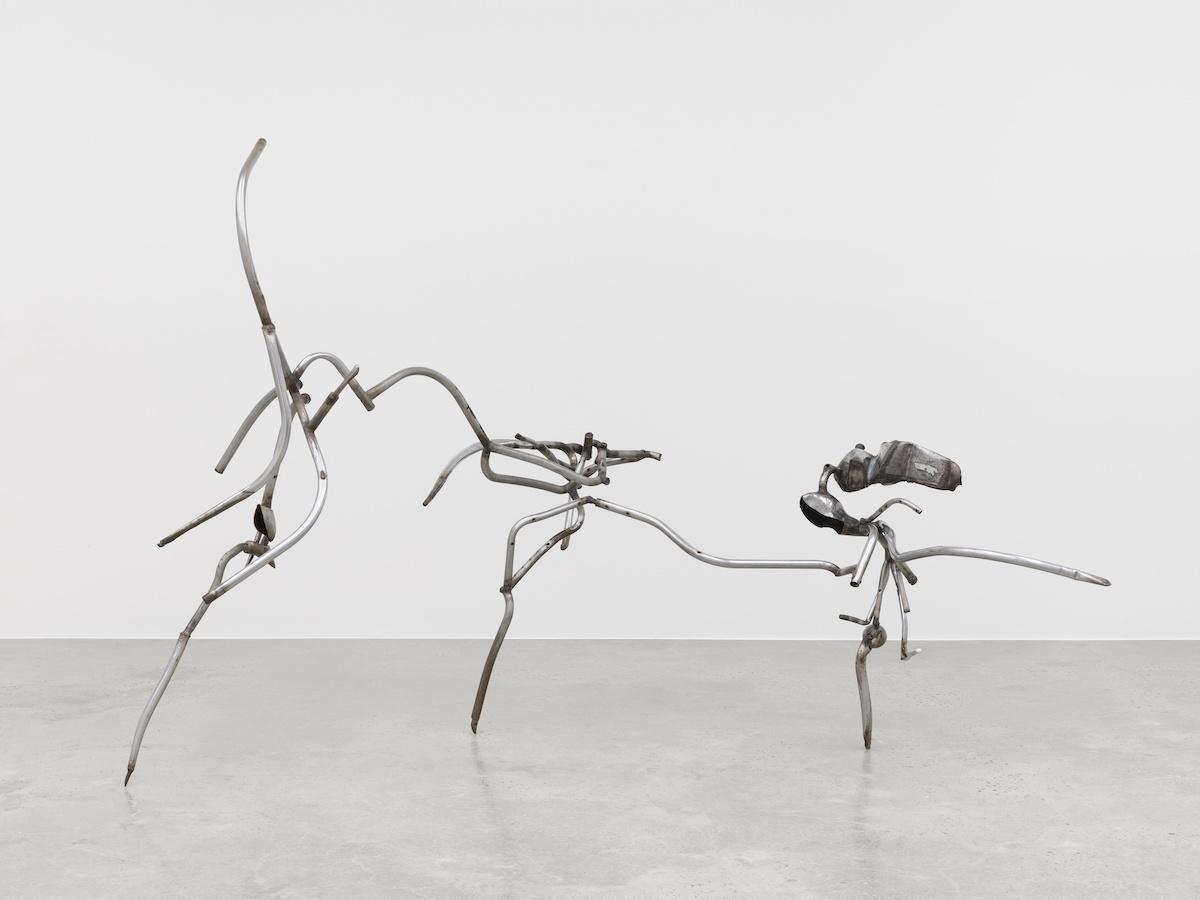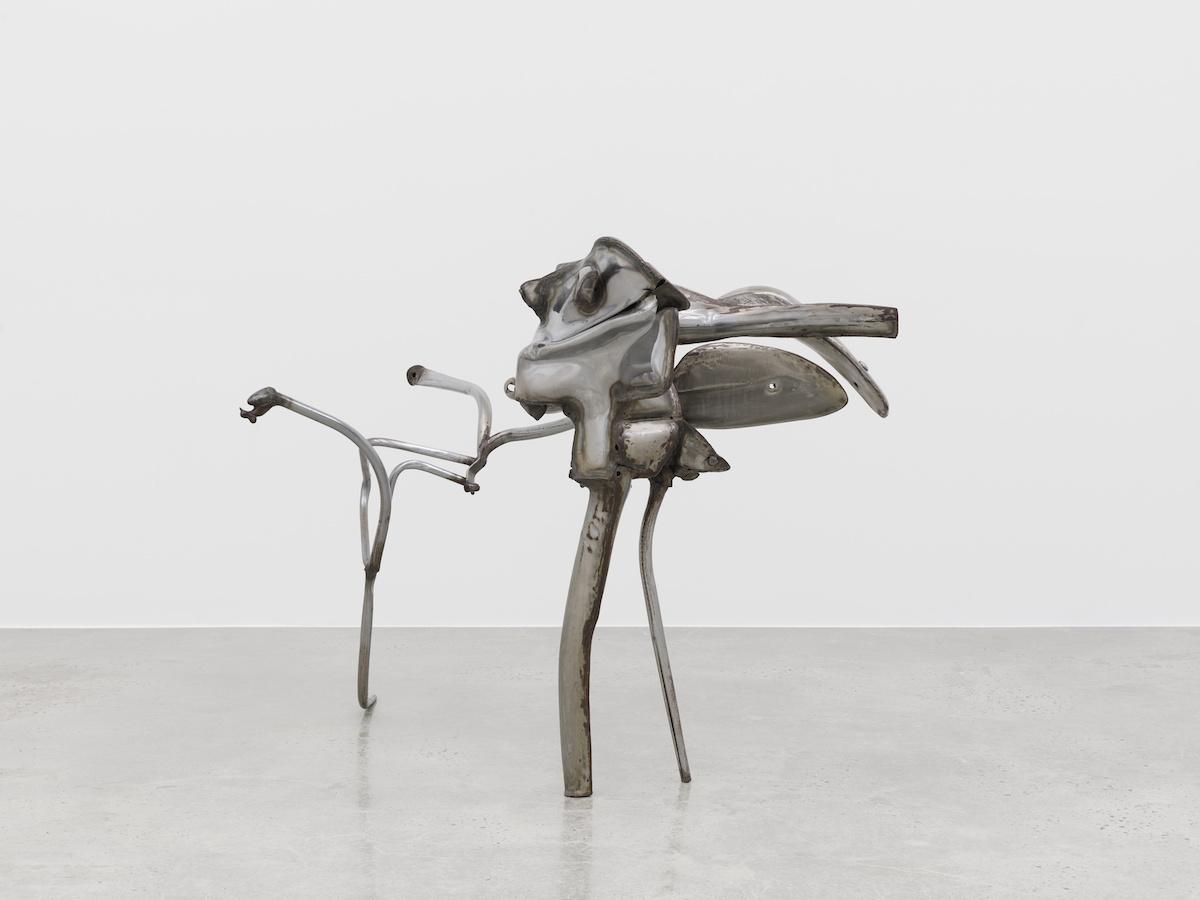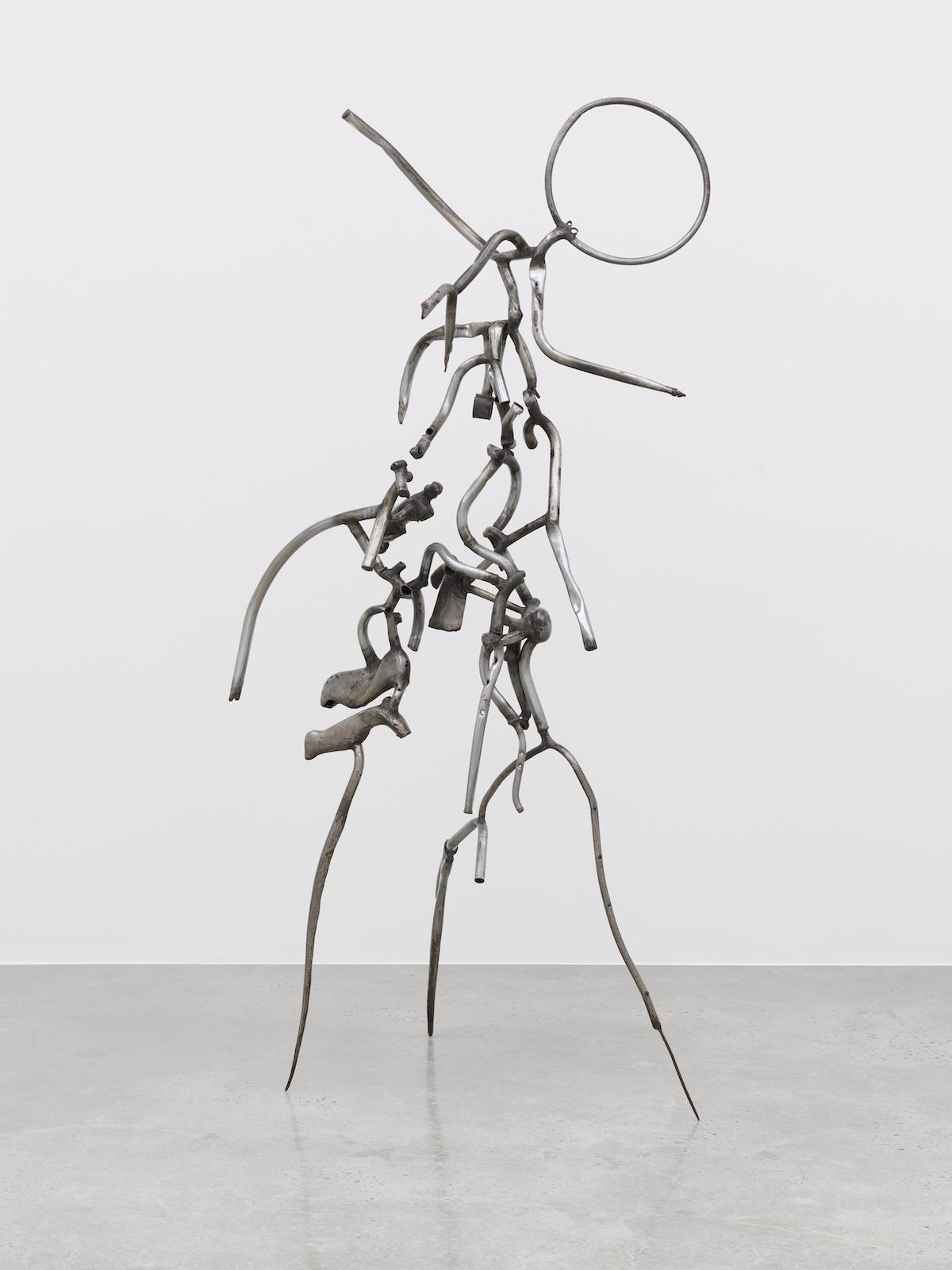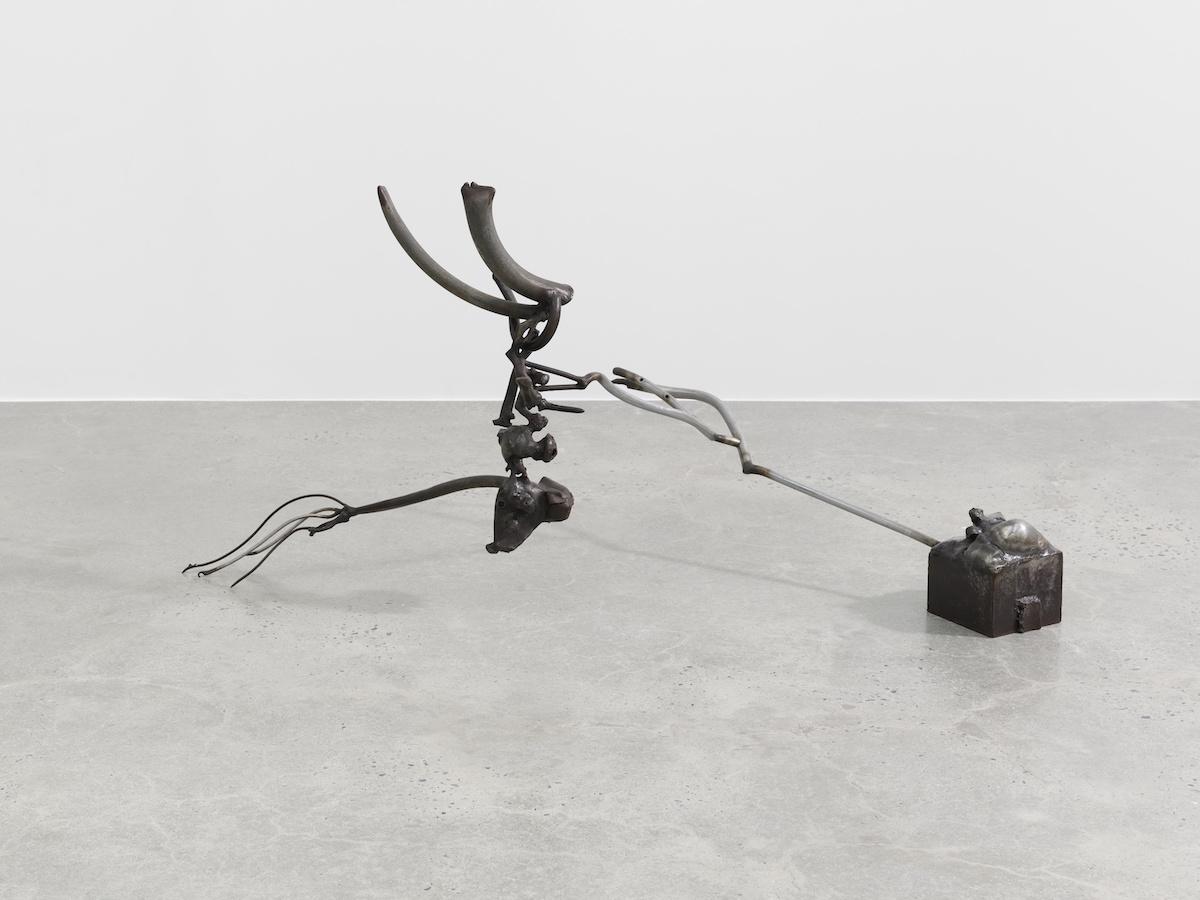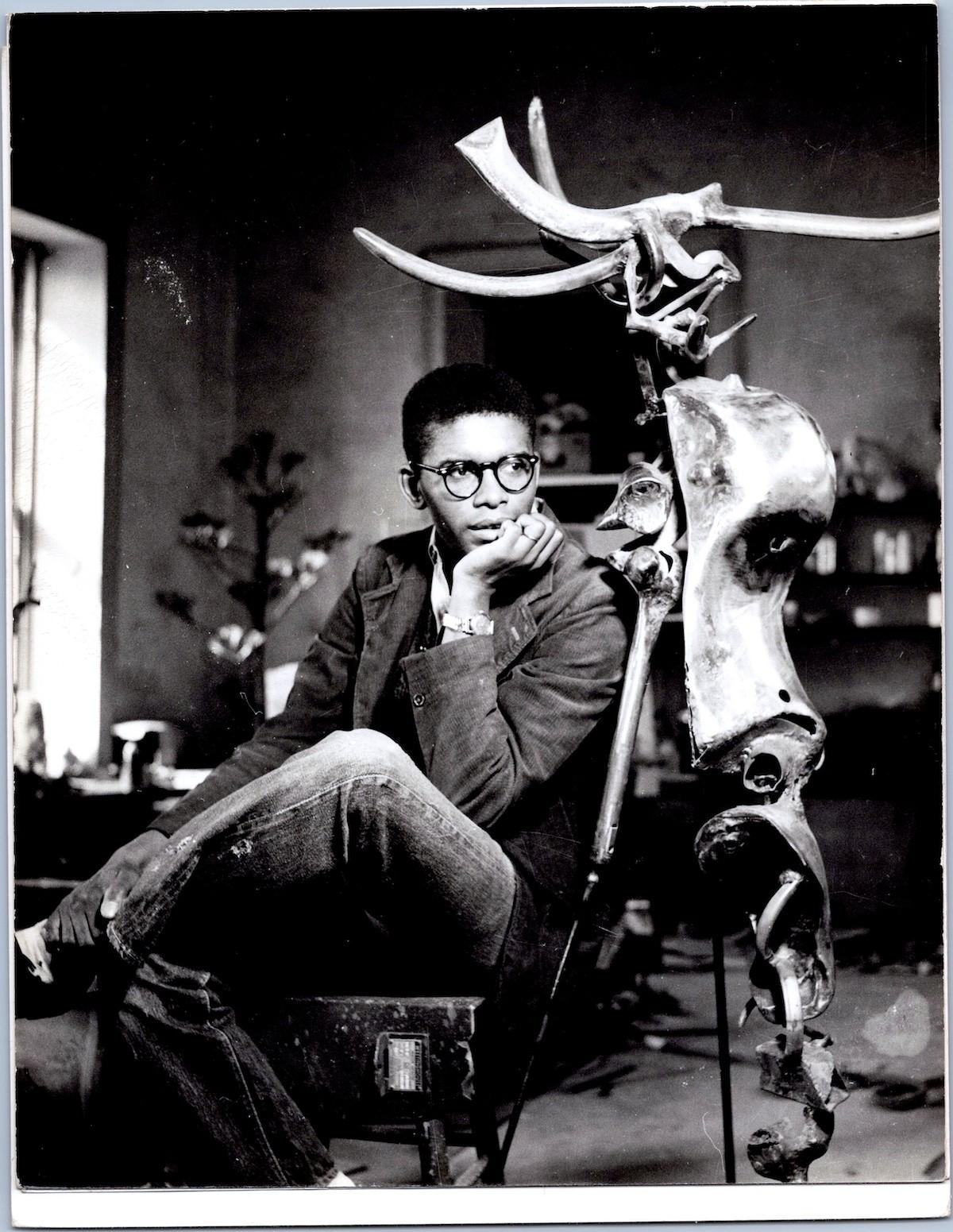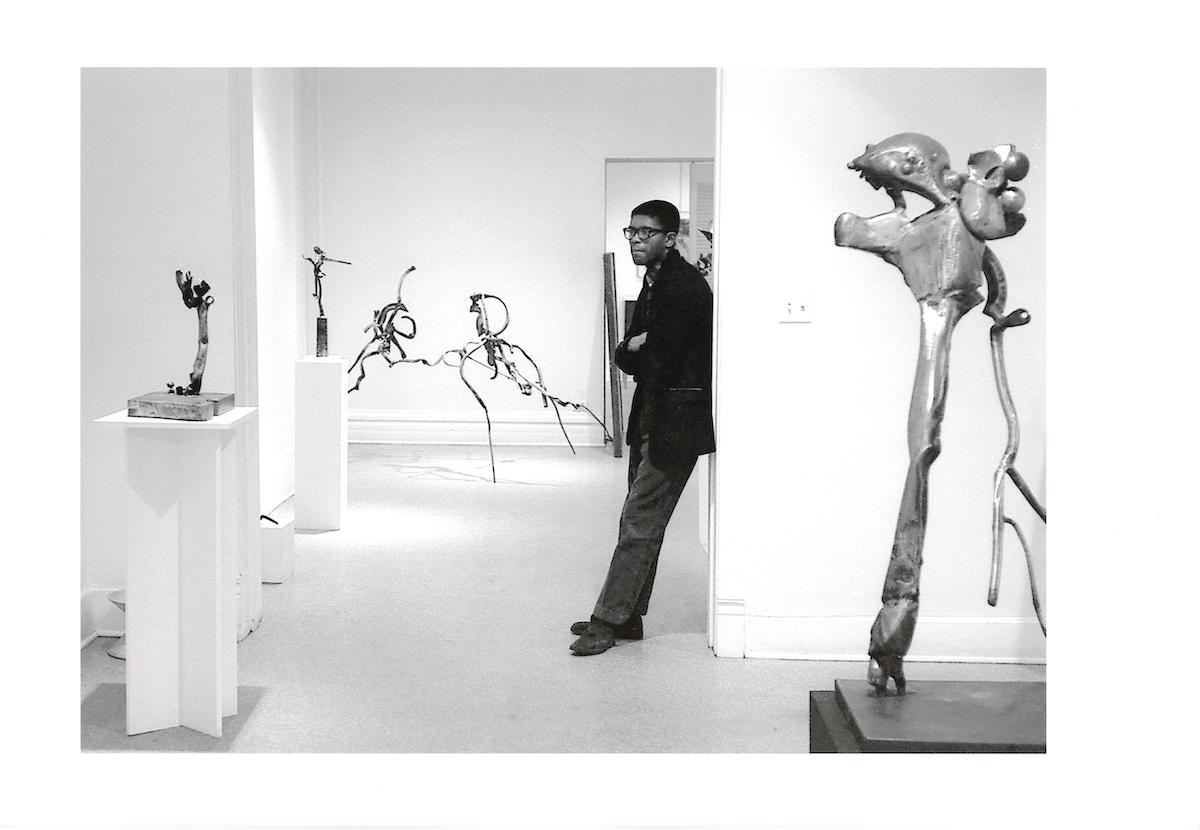Born in Chicago in 1935, Hunt has been lauded as the foremost African American abstract sculptor of the second half of the 20th century. He taught himself how to solder wire and weld after seeing the Art Institute of Chicago’s 1953 exhibition, Sculpture of the Twentieth Century, while still in college. He would go on to earn a Bachelor of Arts from the School of the Art Institute of Chicago in 1957. By the 1960s, he was using scrapped car parts from junkyards as the materials of his work, which explored the relationship between natural organic material and fabricated steel.
“I have this interest both in technologically derived methods of producing things, and… in biological sciences, and the natural world and how things take shape there,” Hunt said about his work in a 2015 podcast by the National Endowment for the Arts. “From cell division to various other kinds of growth and expansion. Part of my creative process involves linking the idea of construction, in a mechanical way, and organic growth.”




